Art World
Artcore: When Buildings Became Blobs
Blobitecture may take inspiration from nature, yet it would not be possible without cutting-edge technology.
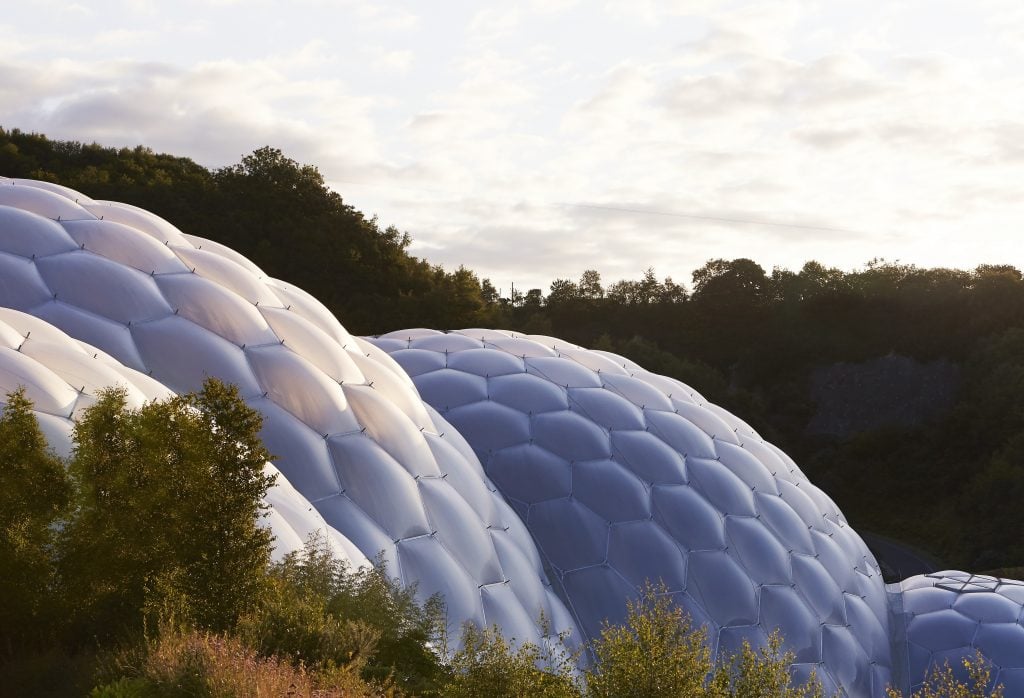
Few architectural terms are as straightforward yet misleading as “Blobitecture.” Also known as Blobism or Blob Architecture, this 21st-century style refers to buildings with blobby, curved designs that give the appearance of living, breathing organisms. Despite being inspired by nature, though, Blobitecture would not be possible without the aid of cutting-edge technology and software.
Expensive engineering nightmares, Blobitecture buildings are consistently ranked as some of the most impressive, unusual, and challenging architectural projects in the world. But how did the movement start, and how has it evolved over time?
When was Blobitecture born?
Although the movement has only been around for a couple of decades, the architectural community has yet to agree on when Blobitecture first emerged. Some say it started in the early 2000s, when the term first entered the vernacular. Others insist that certain buildings constructed before this time period can be retroactively classified as “Blobs,” thus pushing the movement’s birthdate back.
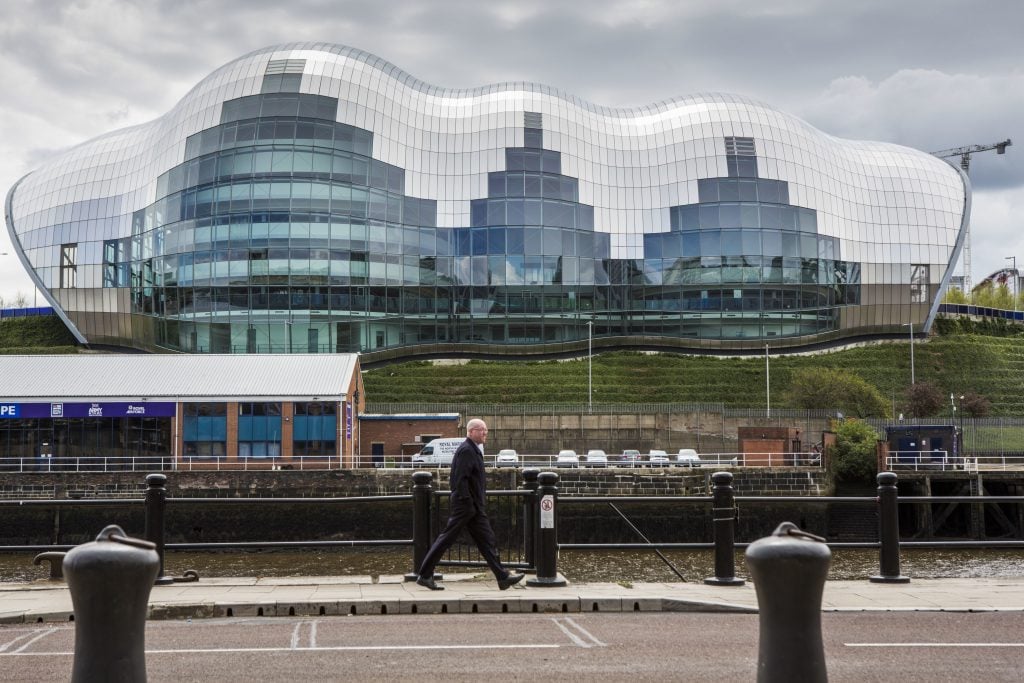
The Sage in Gateshead, the U.K. Photo: In Pictures Ltd./Corbis via Getty Images.
One of the first buildings that meets the aforementioned criteria of Blobitecture is the Sage Gateshead, located in Gateshead, U.K. Also known as the Glasshouse International Centre for Music, this striking concert venue was designed by the architectural firm Foster and Partners for a 1997 competition. The firm’s unorthodox design, featuring curves glass and stainless steel supports, allowed the architects to win first place.
Where did the term “Blobitecture” come from?
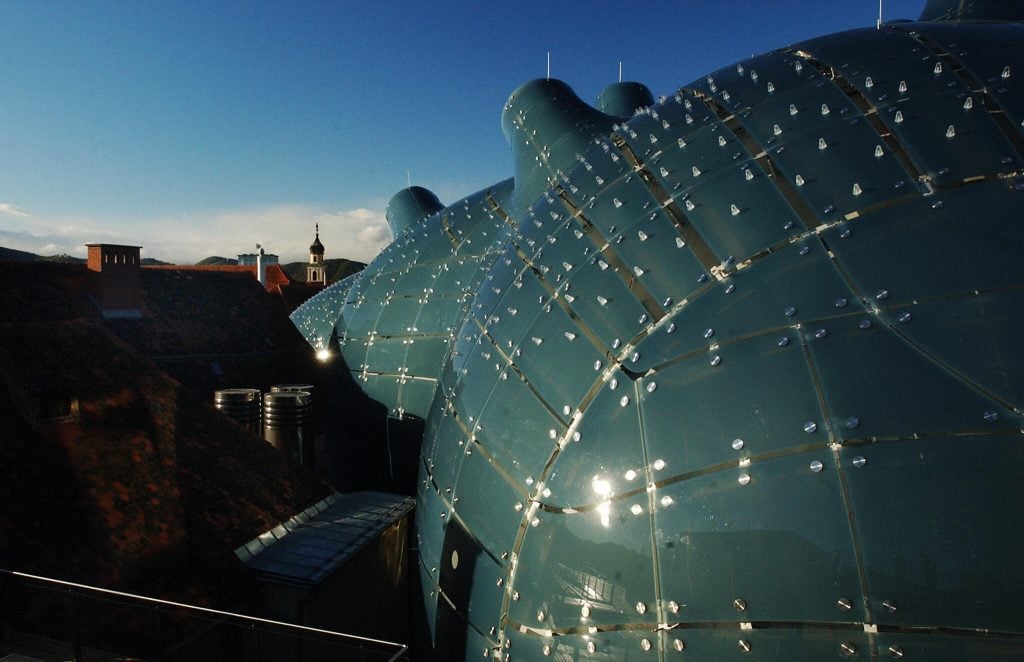
The roof of the Graz Modern Art Museum in Austria. Photo: Joe Klamar / AFP via Getty Images.
The origin of the term has also been the subject of debates. Many websites declare that “Blobitecture” first appeared in a column from New York Times Magazine written by journalist William Safire in 2002. However, neither “Blobitecture” or “Blobism” are mentioned in the article, which instead focuses on “defenestration,” a fancy euphemism for the act of throwing someone out of a window, and how it’s connected to snobby architectural jargon.
The popular architecture and engineering blog An Engineer Writes attributed the coinage of “Blobitecture” to architect Greg Lynn, who came up with the phrase “Blob Architecture” in 1995 to describe the experimental digital designs he was crafting with the help of a rudimentary computer modeling software called “Metaball,” invented by NASA computer scientist Jim Blinn in the early 1980s.
Is “Blobitecture” an insult?
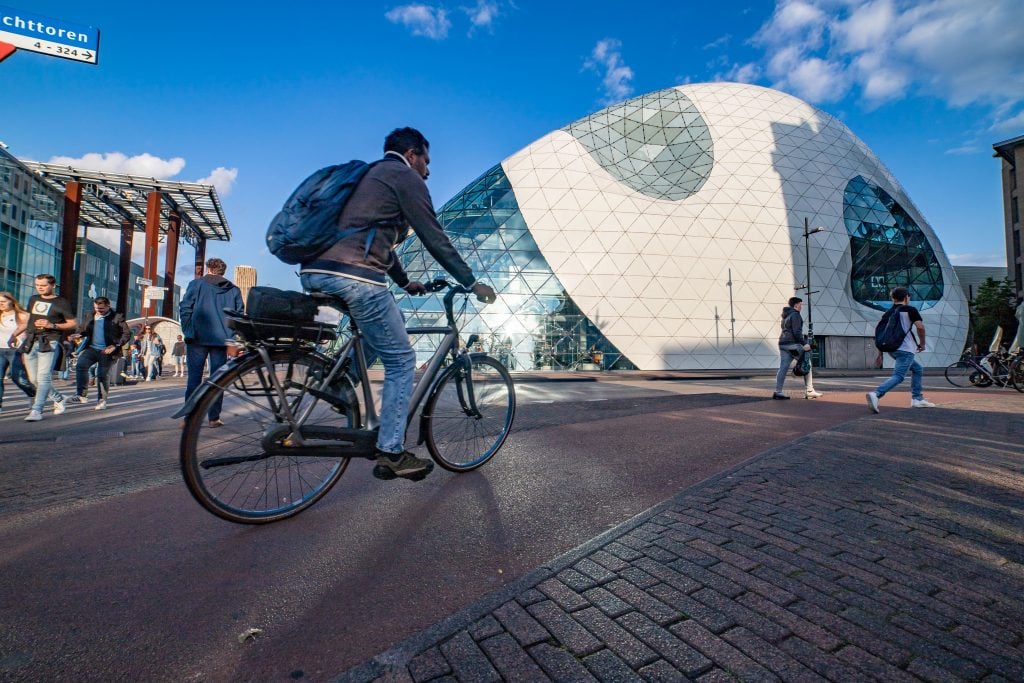
The Blob in Eindhoven, the Netherlands. Photo: Nicolas Economou / NurPhoto via Getty Images.
Yes and no. While Lynn understandably did not use the term as an insult, critics of the emerging movement quickly began using it to make fun of what they saw as postmodernism run wild. Then, in what could indeed be considered a postmodern move, Blobitecture architects reclaimed the insult as a neutral descriptive phrase, owning and, in the process, robbing it of its satirical sting.
The opting and coopting of the term underscored the fact that Blobitecture, much like the architectural style it refers to, has proven difficult to define. As mentioned, most Blobitecture buildings share amorphous, round, curved, and above all organic designs. At the same time, these designs make them stand out from their surroundings like a sore thumb, making what is technically organic appear artificial and alien.
How are Blobitecture buildings made?
Although their organic shapes rebel against the rigid uniformity of buildings constructed following the Industrial Revolution, Blobitecture simply could not exist without the aid of modern technology. Indeed, the structural plans of these buildings are so complex they could not be completed without the help of computer software. And the more sophisticated those programs become, the blobbier the architecture they help create.
In the architectural field, these programs are referred to as CAD or computer-assisted-design applications. In short, CAD software allows architects to create fully three-dimensional models of physical objects using a graphical user interface or GUI. This way, architects can be confident their designs won’t collapse in on themselves when they start building.
What are some notable examples of Blobitecture?
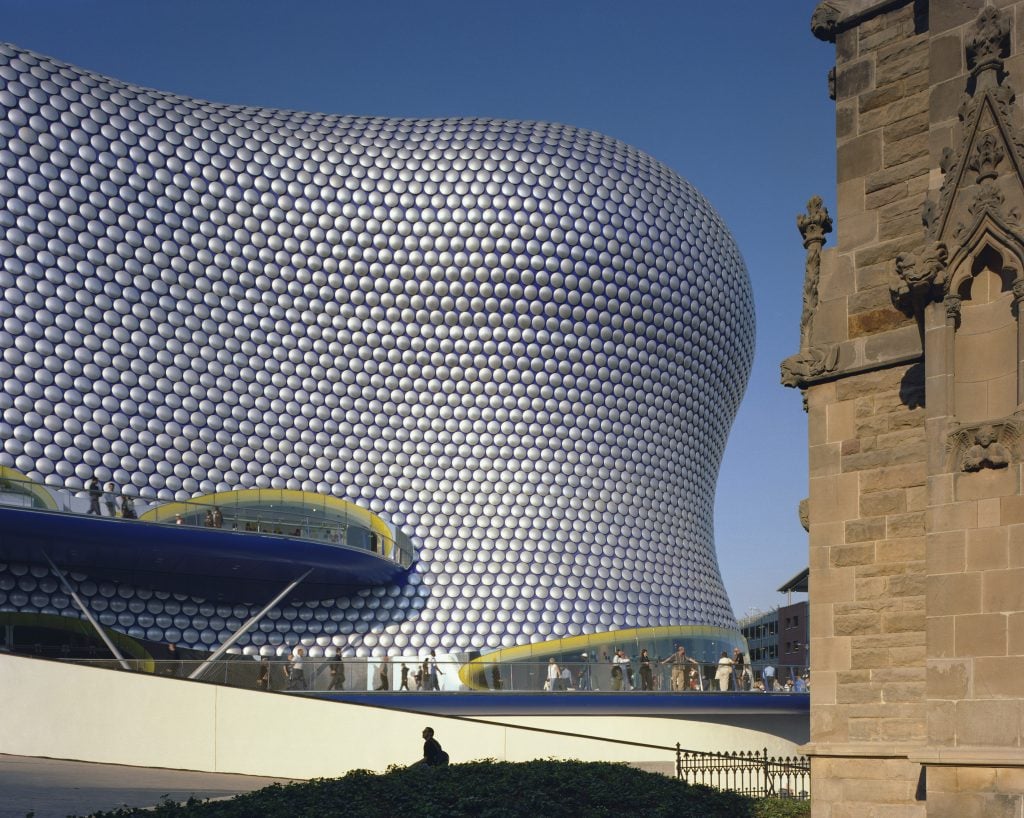
The Selfridges department store in Birmingham, the U.K. Photo: Tom Lee / Construction Photography / Avalon / Getty Images.
One of the most famous examples of Blobitecture is the Selfridges building in Birmingham, U.K. Designed by architecture firm Future Systems in the early 2000s, the design was intended to make the building, a department store, catch the eye of potential customers. Resembling a submarine, the outside of the structure is covered in 15,000 anodized discs, giving it an appearance that is at once organic and futuristic.
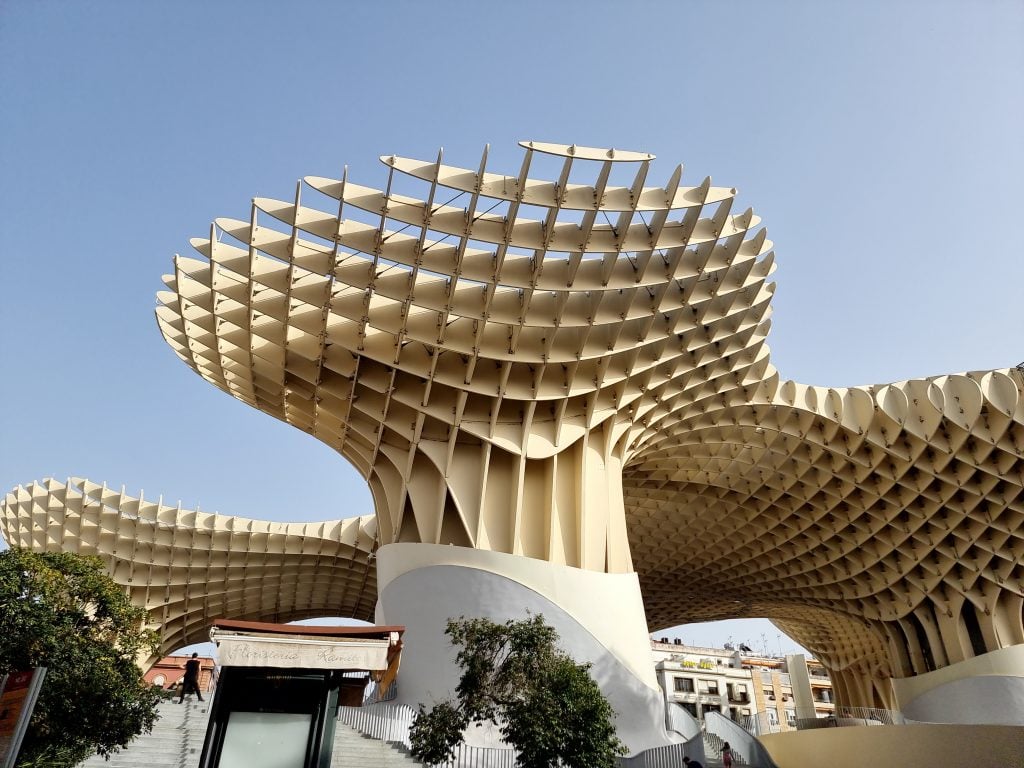
The Metropol Parasol in Seville, Spain. Photo: Saiful Islam / Majority World / Universal Images Group via Getty Images.
Another noteworthy example of Blobitecture is the Metropol Parasol in Seville, Spain. Designed by the German architecture firm J. Mayer H. Architects and completed in 2011, it’s located in Seville’s La Encarnación square, next to the Cathedral of Seville, and consists of six connected parasol-like structures made of wood. Measuring 492 feet long, 246 feet wide, and 92 feet high, it’s one of the biggest wooden constructions in the world.
Is Blobitecture the architecture of the future?
Despite its futuristic appearance, Blobitecture is unlikely to go mainstream in the coming years. One reason for this is practical: Blobitecture buildings are difficult to design and even more difficult to construct. On top of this, they are extremely expensive. They are also not very space-efficient, which helps explain why most buildings are venues or pavilions rather than office spaces or residencies.
Another reason why Blobitecture probably won’t go mainstream has to do with the underlying ideas of the movement itself. Part of what makes Blobitecture buildings so striking is the contrast between the buildings and the surrounding architecture. If every building was a blob, Blobitecture would lose its imposing presence.
For as long as there has been art, revolutionary movements have continually reshaped its creation and perception. Artcore unpacks the trends that have shaken uptoday’s and yesterday’s art world—fromthe elegance of 18th-century Neoclassicism tothe bold provocations of the 1990s Young British Artists.





